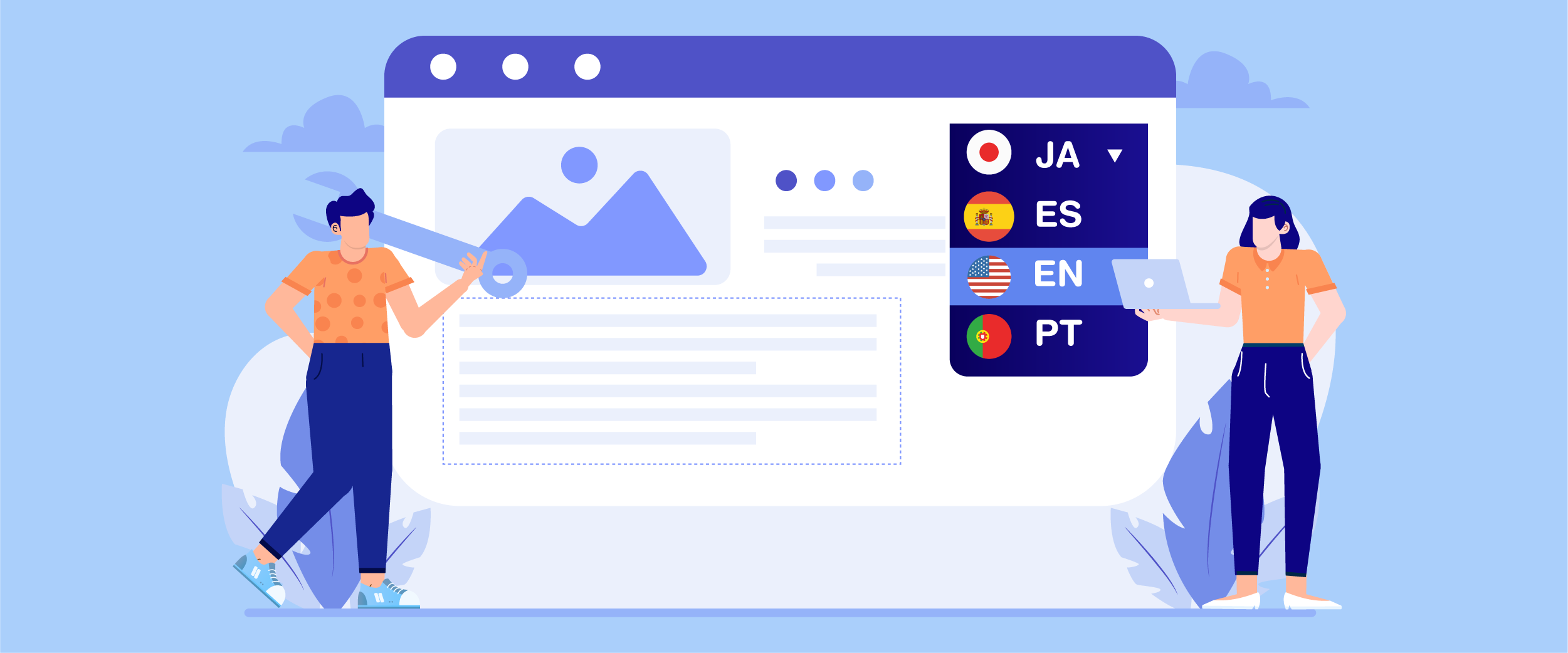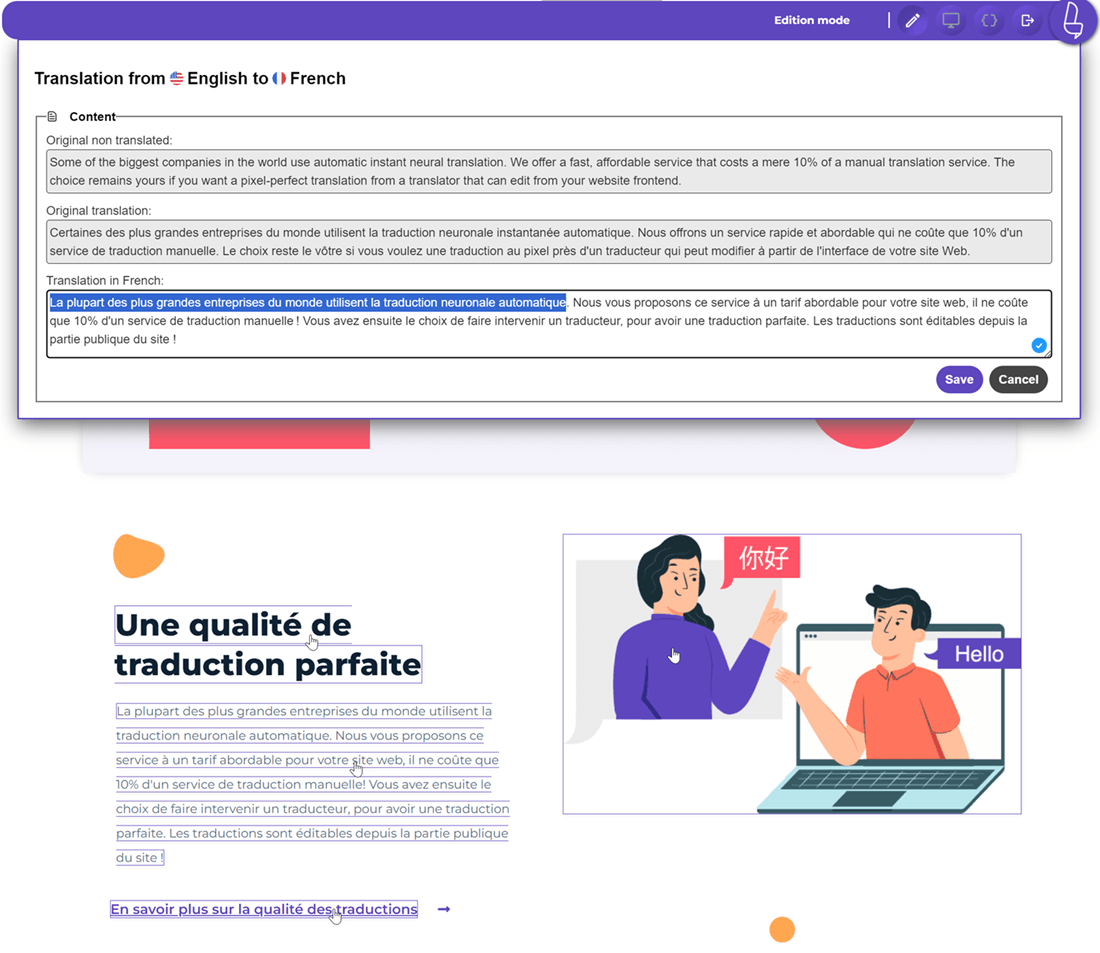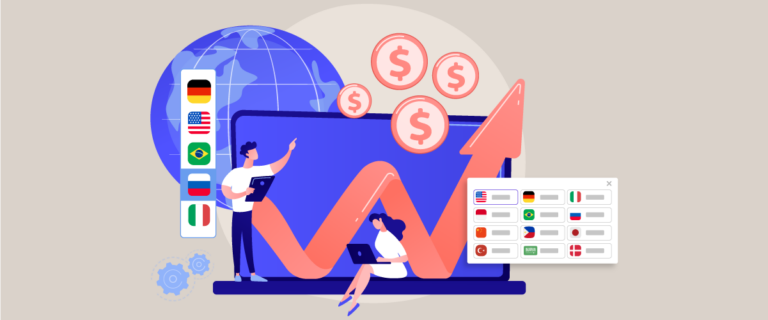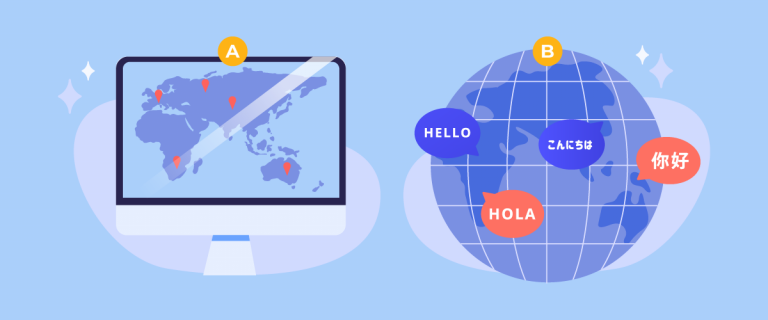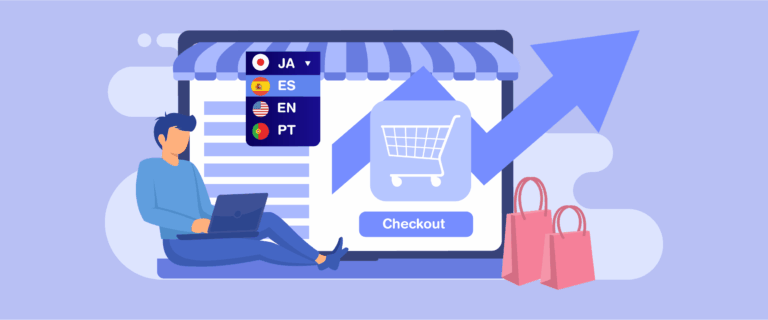Optimizing multilingual landing pages for agencies is essential for creative businesses that want to compete in the global market. A landing page is the first gateway for potential clients, so it must be engaging, relevant to the visitor’s language, and search engine-friendly. With the right strategy, agencies can reach a wider international audience and turn visitors into high-quality leads.
Many agencies have built multilingual landing pages but have not optimized them properly. As a result, these pages may fail to appear in global search results or struggle to build user trust because the content feels unnatural. This article will explore common mistakes, SEO best practices, conversion strategies, and the balance between automation and human editing to ensure landing pages perform effectively.
Why multilingual landing pages matter for agencies?

Multilingual landing pages matter for agencies because they help connect with audiences across different countries and cultures. A well-optimized landing page improves visibility in search engines and builds trust with potential clients who prefer content in their native language.
- Reach a wider international audience: By offering content in multiple languages, agencies can attract visitors from different regions and expand their client base beyond local markets.
- Build trust and credibility: People are more likely to engage with content in their language. Providing localized landing pages shows respect for cultural differences and builds stronger relationships.
- Increase conversions: A landing page personalized to a visitor’s language and culture encourages them to take action—whether filling out a form, booking a consultation, or purchasing.
- Improve SEO performance globally: Multilingual pages, when optimized with proper keywords and technical elements, can rank higher in search results across multiple regions, driving consistent organic traffic.
- Stay competitive in the global market: Agencies competing internationally need more than just a generic landing page. Multilingual optimization ensures they stand out against global competitors.
Common mistakes agencies make with multilingual landing pages
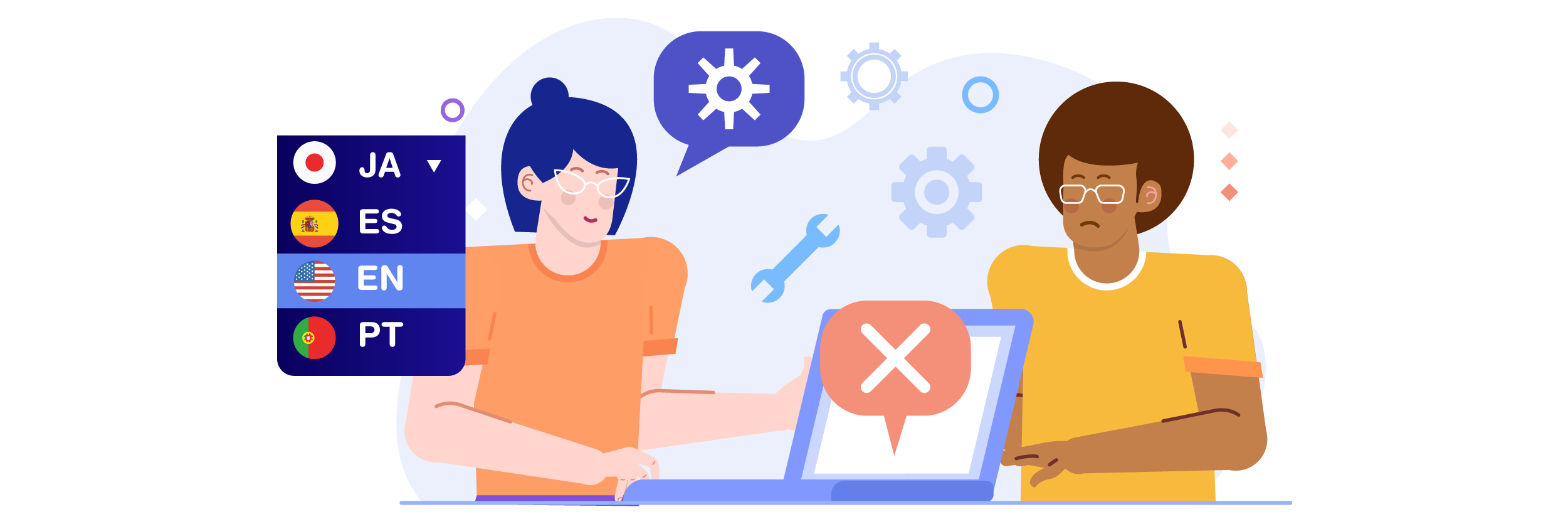
Creating multilingual landing pages may sound straightforward, but many agencies stumble on critical details that affect performance and credibility. Without proper planning, these pages can fail to connect with audiences, rank poorly in search engines, or even harm the agency’s reputation.
Below are some of the most common mistakes agencies make when building multilingual landing pages, along with explanations of why they matter and how to avoid them.
Relying solely on machine translation
One of agencies’ most common mistakes is depending entirely on machine translation. While tools like Google Translate or AI-powered systems can quickly convert text, the results often miss subtle meanings, tone, or cultural nuances. This can make the content sound robotic or unnatural to native speakers, which reduces trust and engagement.
Agencies should view machine translation as a starting point, not the final product. Human editing is essential to refine word choices, adjust tone, and ensure the message feels authentic. Without this step, landing pages risk losing credibility, and potential clients may choose competitors that offer clearer, more professional communication.
Ignoring cultural and regional context
Simply translating words into another language is not enough; cultural and regional context matter. For example, certain colors, phrases, or images may carry positive meaning in one culture but negative associations in another. Ignoring these differences can unintentionally create misunderstandings or even offend the audience.
Agencies need to conduct cultural research and tailor content to local expectations. This may involve adjusting visuals, rewriting calls to action, or aligning offers with regional preferences. By respecting cultural nuances, landing pages become more relatable and persuasive for international visitors.
Using the same design for all languages without adaptation
Design plays a crucial role in understanding content, yet many agencies use a single design across all languages without making adjustments. Different languages have varying text lengths, reading directions, or layout preferences. Without adaptation, designs may look cramped, misaligned, or difficult to read. Agencies should therefore create flexible layouts that accommodate text expansion, support multiple scripts, and remain visually appealing across languages.
Beyond text, forms are also a critical element that need localization. By ensuring forms and layouts align with local standards and expectations, agencies can make the overall user experience feel natural, intuitive, and professional, no matter where the visitor comes from.
Here is an example of a landing page for the Subscribe to Newsletter form in English.
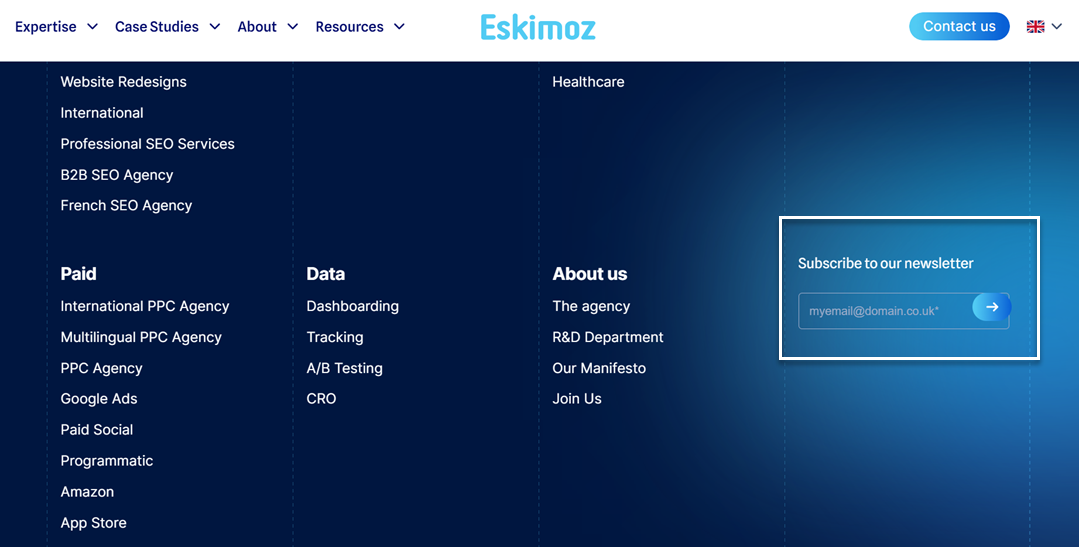
When translated into French, the element will also be translated into that language.
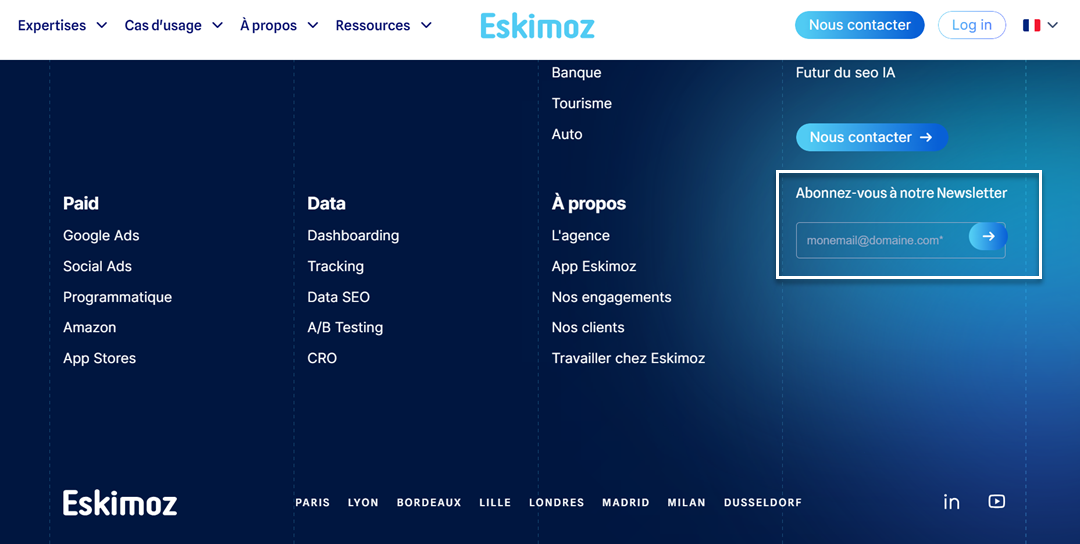
Failing to optimize SEO for each language
A multilingual landing page will not deliver results if it isn’t optimized for search engines in each target language. Many agencies simply translate the English keywords directly, missing out on how people in other regions actually search for services. For example, terms popular in the U.S. may not match the search habits of audiences in France or Japan.
Proper multilingual SEO requires localized keyword research, unique metadata for each version of the page, and optimized headings. By tailoring SEO efforts to each language, agencies can improve visibility in international search results and attract higher-quality traffic that is more likely to convert.
Overlooking technical elements like hreflang and site speed
Technical setup is often overlooked but critical for multilingual success. Hreflang tags tell search engines which version of a page should be shown to users based on their language or location. Without correct implementation, visitors may see the wrong version of the landing page, leading to confusion or high bounce rates.
Site speed is another factor agencies sometimes ignore. If servers are not optimised globally, visitors from different regions may face slower loading times. Using content delivery networks (CDNs) and compressing assets ensures fast performance, improving user experience and SEO rankings.
Inconsistent branding and messaging across languages
Lastly, many agencies fail to maintain consistent branding and messaging across different languages. While it’s important to localize content, the core brand voice, values, and identity should remain recognizable. Inconsistency can make the agency seem unreliable or fragmented in the eyes of international clients.
To avoid this, agencies should establish brand guidelines that apply across all languages. Translators and editors must understand the tone, style, and messaging principles so that every landing page feels cohesive. Consistent branding not only strengthens recognition but also builds long-term trust with global audiences.
SEO best practices for multilingual landing pages agencies
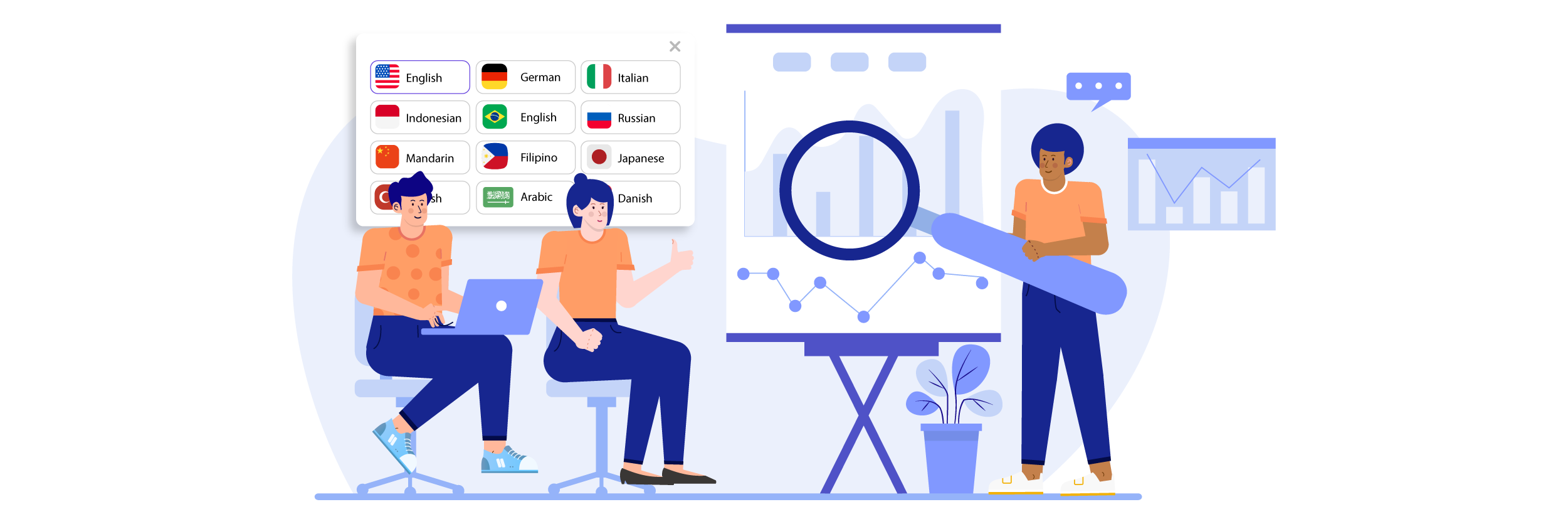
Optimizing multilingual landing pages for SEO is one of the most effective ways agencies can drive consistent international traffic. Without strong SEO practices, even well-designed landing pages may struggle to reach their target audience or convert visitors into leads.
Conducting local keyword research for each target market
Keyword research is the foundation of SEO, and it becomes even more critical in a multilingual context. Simply translating English keywords into another language often fails to capture how local audiences search. For example, Spanish speakers in Mexico may use different terms than those in Spain, even though they share the same language.
Agencies should conduct separate keyword research for each target market to identify high-volume, culturally relevant search terms. This ensures the landing page aligns with the audience’s search intent and improves the chances of ranking well in local search results.
Crafting SEO-friendly titles, meta descriptions, and headers
Titles, meta descriptions, and headers are essential for both SEO and user engagement. Many agencies translate these elements word-for-word, missing the opportunity to craft compelling copy that resonates with local audiences. Search engines also prioritize unique and well-optimized metadata in determining rankings.
Instead of direct translations, agencies should adapt titles and descriptions with localized keywords while keeping them engaging and natural. Headers should guide readers through the content in a way that feels intuitive, while also including important search terms. This approach helps boost click-through rates and improve visibility in international markets.
Implementing hreflang tags correctly
Hreflang tags are critical for multilingual websites because they tell search engines which version of a page to show to users based on their language or region. Without hreflang, visitors may end up on the wrong version of a page, which hurts both user experience and SEO performance.
Agencies often struggle with hreflang implementation, leading to errors that confuse search engines. Correct setup and validation ensure that each user sees the right content in their preferred language, improving relevance and reducing bounce rates. This technical step is essential for multilingual SEO success.
Optimizing URL structure for multilingual content
A clear and logical URL structure helps search engines understand site hierarchy and improves indexing. Some agencies make the mistake of keeping URLs in one language or using messy parameters, which can weaken SEO signals.
Using subdirectories (e.g., /fr/ for French or /de/ for German) or subdomains dedicated to each language is a better approach. Consistent and localized URLs not only improve SEO but also reassure users that they are on the correct version of the page.
Using schema markup to improve international visibility
Schema markup enhances how search engines interpret and display content. For multilingual landing pages, structured data can help highlight important information such as services, locations, and reviews in search results. This improves click-through rates and strengthens credibility.
When implementing schema, agencies should ensure that the markup matches the translated content for each language. This alignment makes search engines more confident about the information’s accuracy and can lead to rich snippets that stand out in global search results.
Ensuring fast loading speed across different regions
Page speed is a ranking factor and a key part of user experience. Visitors from different regions may face slower load times if the site is not optimized globally. A slow website discourages users, increases bounce rates, and reduces conversion opportunities.
Agencies should use strategies like content delivery networks (CDNs), image compression, and optimized code to ensure fast performance worldwide. By prioritizing speed, multilingual landing pages can deliver a seamless experience for international audiences while boosting search engine rankings.
Conversion-focused strategies for agencies

A multilingual landing page is not just about attracting visitors, it must also convert them into leads or clients. Agencies must design landing pages that feel relevant, trustworthy, and easy to interact with for users in different languages and cultures.
Designing clear and localized CTAs
Calls-to-action (CTAs) guide visitors toward taking the next step, whether it’s booking a consultation or filling out a form. A common mistake is translating CTAs word-for-word, which can result in unclear or unconvincing messages. Instead, CTAs should be localized to match how people in each language typically respond to prompts.
Here is an example of a multilingual landing page from an SEO agency with CTAs in English such as Pricing, Email Now, and Book Intro Call.
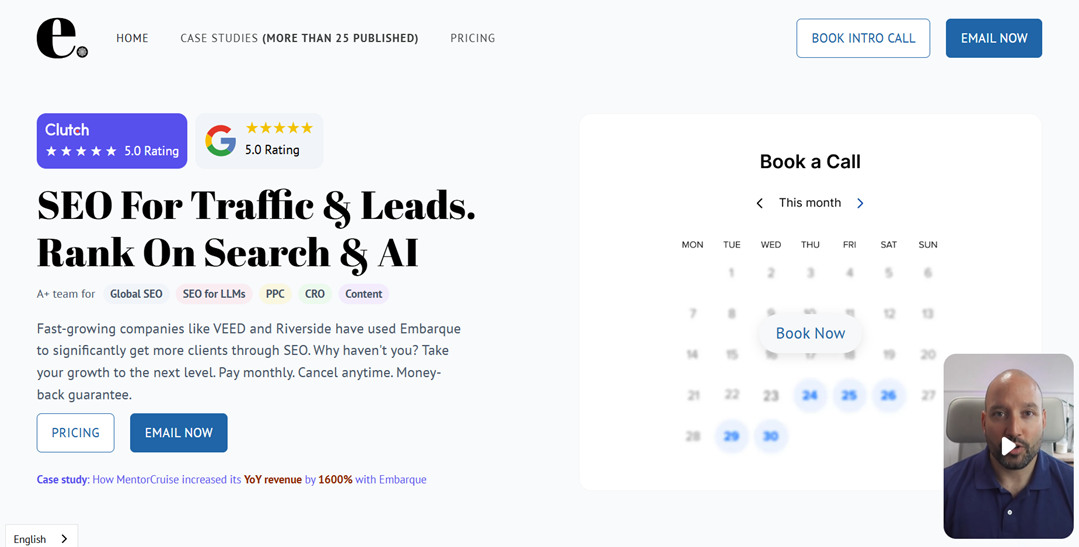
Meanwhile, they also provide content in Viet, and all CTA buttons will be translated into that language as follows.
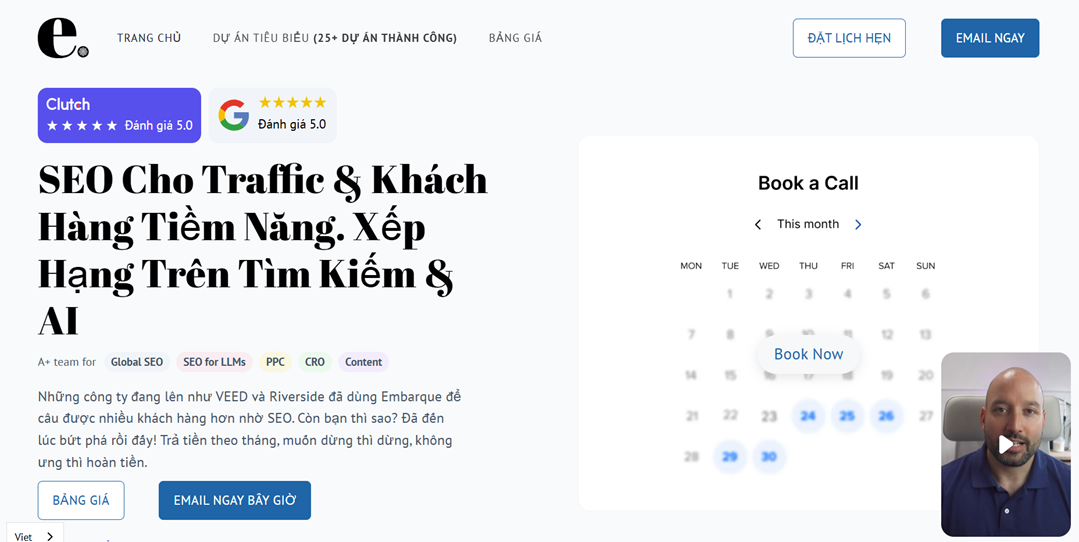
Creating effective multilingual forms
Forms are critical to landing pages, but they can create friction if not properly localized. Labels, field instructions, and error messages need to be translated accurately and adapted to local formats. For instance, date formats or address structures vary widely between countries.
As an example, a form designed for French visitors should accept postal codes in a five-digit format, while one for the U.S. should include state dropdowns. Ignoring these details can frustrate users and reduce submission rates.
Building trust with social proof and testimonials
Trust is essential for converting international visitors. Displaying testimonials, case studies, or reviews in the local language makes them more relatable and persuasive. Showing real client experiences helps potential customers feel confident in choosing the agency.
For instance, an agency promoting services in Japan could highlight testimonials from Japanese businesses, written in Japanese, rather than reusing English reviews. This makes the proof feel authentic and directly relevant to the local audience.
Highlighting localized offers and value propositions
Every market has unique priorities and pain points. Highlighting offers that address local needs makes landing pages more compelling. For example, a digital marketing agency could emphasize e-commerce solutions in markets where online shopping is booming.
A practical case would be an agency entering the Indonesian market focusing on mobile-first strategies since a large portion of users access the internet through smartphones. This directly addresses the needs of local businesses and resonates better with prospects.
Using visuals and design elements that resonate culturally
Visuals can strongly influence user perception, but what works in one culture may not be effective in another. Colors, imagery, and layout styles can carry different meanings across regions. For example, the color red may symbolize luck in China but can suggest danger in Western contexts.
A relevant example is when an agency designs a landing page for Middle Eastern audiences. Incorporating imagery of local landmarks or modest design styles can align the page with cultural expectations and foster stronger connections.
Personalizing user experience to boost engagement
Personalization helps create a sense of relevance for each visitor. This could mean adjusting recommendations based on location, using dynamic content, or offering tailored services that reflect the user’s needs.
For instance, an agency offering marketing services could display different case studies depending on where the visitor is browsing from, European users might see examples from EU-based clients, while Asian visitors are shown success stories from regional businesses. This makes the page feel more directly useful and persuasive.
Technical elements that strengthen performance for agencies

A multilingual landing page doesn’t only require good translation but also technical elements that support performance. For agencies, ensuring that these technical aspects run smoothly is essential for maintaining search visibility and delivering the best user experience across different regions. Below are some key elements to consider.
Implementing and validating hreflang tags
Hreflang tags help Google understand which language or regional version of a page should be shown to users. Without these tags, pages can be displayed incorrectly, for example, a user in Japan might see a Spanish version of the page. For agencies, implementing hreflang properly increases the relevance of pages in the intended markets.
Validation is just as important, as errors in hreflang syntax can prevent search engines from reading them correctly. Agencies should regularly use tools like Google Search Console or Screaming Frog to ensure hreflang is working as expected.
Using schema markup for multilingual visibility
Schema markup provides additional context to search engines about a page’s contents. For example, a product page can include markup that indicates the price, description, and availability in different languages. This helps search engines display richer results across markets.
With schema, agencies can also ensure multilingual content is more easily recognized in global search results. Proper implementation makes landing pages stand out and increases the chance of clicks from international audiences.
Ensuring translation accuracy and consistency
Consistency in translation is key to maintaining a professional brand image. If terms or messages change from one page to another, users may become confused and lose trust. Agencies need to ensure every translation is accurate, context-appropriate, and consistent across all communication channels.
Using tools like translation memory or style guides is very helpful for this. They ensure that every new piece of content follows the same language standards, maintains the right tone of voice, and improves efficiency in multilingual projects.
Optimizing site speed across regions
Site speed is one of the most important factors for user experience. Visitors from Europe may have a very different experience compared to those in Asia if the server isn’t optimized. Agencies can leverage Content Delivery Networks (CDNs) to make sure pages load quickly across regions.
In addition, image optimization, file compression, and reliable hosting also play a big role. The faster a site loads, the more likely users are to stay on the page and eventually convert.
Managing multilingual sitemaps and indexing
Sitemaps act as a roadmap for search engines to understand a site’s structure. In a multilingual context, the sitemap must include every language version so Google can index them properly. Without a well-structured sitemap, some pages risk not appearing in search results.
Agencies should ensure multilingual sitemaps are regularly updated as content changes. With proper management, all language versions can be easily found and indexed, increasing the chances of reaching a global audience.
Integrating CMS and translation tools effectively
Integrating a CMS with translation tools helps agencies work more efficiently and avoid repetitive manual tasks. Instead of copying and pasting content between platforms, this integration enables automation while allowing high-quality translations.
The right integration saves valuable time and reduces the risk of technical errors or inconsistencies. With these processes running smoothly in the background, agencies can focus more on content strategy, user experience, and overall site performance while ensuring that multilingual landing pages are accurate, consistent, and optimized for global audiences.
Balancing automation and human editing for agencies

Finding the right balance between automation and human editing is crucial for agencies when working on multilingual landing pages. Machine translation can be a big time-saver, especially when dealing with large amounts of content or when updates must go live quickly. This approach allows agencies to keep content fresh and responsive to fast-changing campaigns or promotions without slowing the workflow.
However, not all content is suitable for machine translation alone. Strategic elements such as CTAs, headlines, and value propositions require a human touch to ensure they resonate emotionally and culturally with the target audience. A catchy headline in English might lose its impact if translated literally. That’s why a machine translation post human editing approach is recommended—human editors refine the message and adapt it to local contexts, ensuring it feels natural, persuasive, and culturally relevant.
A practical workflow for agencies can be structured as follows:
- Use machine translation for bulk content or quick updates. This ensures efficiency and scalability.
- Involve human editors for strategic elements. Headlines, CTAs, and value propositions should be reviewed and adapted for cultural accuracy.
- Apply quality assurance across all pages. This final step ensures translation accuracy, consistency, and overall brand alignment.
Adopting this hybrid workflow saves time and ensures high-quality results that maintain brand credibility and drive conversions. Tools like Linguise make this process seamless for agencies. With Linguise, you can automate the bulk of translations while giving editors full control to refine critical content. This makes it particularly effective for multilingual landing pages, where speed and precision are needed to capture international leads without compromising quality.
In short, balancing automation and human editing helps agencies scale globally while still maintaining the trust and engagement of local audiences, something that’s vital for turning multilingual visitors into real clients.
Conclusion
Optimizing multilingual landing pages for agencies is a key strategy for competing in the global market. By avoiding common mistakes, applying strong SEO practices, focusing on conversion strategies, and ensuring technical excellence, agencies can create landing pages that rank well internationally and build trust and engagement with local audiences. The balance between automation and human editing further ensures that content is both efficient to produce and culturally relevant, maximizing the chances of turning visitors into real clients.
Tools like Linguise offer the perfect balance between speed and precision for agencies looking to streamline this process. With its automated translations enhanced by human editing capabilities, Linguise helps agencies scale their multilingual landing pages effectively while maintaining quality and consistency, making it an ideal solution for driving global growth.

